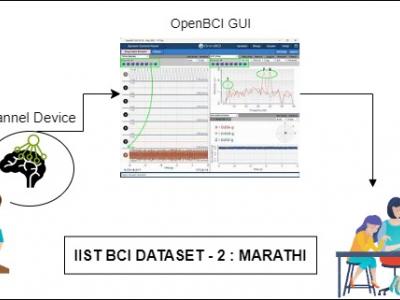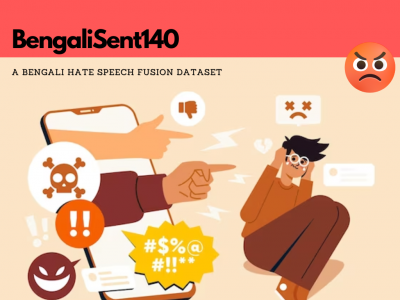Artificial Intelligence
This is the official Thaat and Raga Forest (TRF) Dataset
Please do cite our paper: Link to Paper
Dataset is also available here: Link to Dataset
- Categories:
 1235 Views
1235 Views
This corpus comprises a diverse collection of authentic dialogues extracted from clinical encounters and from AI-generated interactions. Encompassing a wide array of scenarios, it offers a comprehensive snapshot of human communication within medical contexts and the evolving capabilities of AI. By intertwining genuine exchanges with those produced by AI models, the corpus facilitates a deeper understanding of communication dynamics and the progression of AI technology in simulating human interactions.
- Categories:
 404 Views
404 Views
Autistic people typically need methodical support as they explore and interact with their immediate surroundings and the objects associated with them, emphasising the importance of spatial knowledge and cognitive skills in improving and understanding their surroundings. The objective of this research paper is to present a conceptual and technical framework that could be of significant assistance in developing spatial ability and cognitive skills in autistic people.
- Categories:
 236 Views
236 ViewsThe emergence of SARS-CoV-2 lineages derived from Omicron, including BA.2.86 (nicknamed “Pirola”) and its relative, JN.1, has raised concerns about their potential impact on public and personal health due to numerous novel mutations. Despite this, predicting their implications based solely on mutation counts proves challenging. Empirical evidence of JN.1’s increased immune evasion capacity in relation to previous variants is mixed.
- Categories:
 128 Views
128 ViewsThis dataset contains RF (Radio Frequency) signals obtained from simulations, which model ultrasound propagation in cortical bone.
The simulations were designed to provide insights into the behaviour of ultrasound waves in cortical bone tissues, both in intact and pathological conditions. The dataset covers a wide range of parameters, including varying thickness (1-8 mm), porosity (1-20%), and frequency (1-8 MHz), allowing to explore the impact of these factors on ultrasound signal characteristics.
- Categories:
 408 Views
408 ViewsThe Partial Discharge - Localisation Dataset, abbreviated: PD-Loc Dataset is an extensive collection of acoustic data specifically curated for the advancement of Partial Discharge (PD) localisation techniques within electrical machinery. Developed using a precision-engineered 32-sensor acoustic array, this dataset encompasses a wide array of signals, including chirps, white Gaussian noise, and PD signals.
- Categories:
 1129 Views
1129 ViewsProblems of neurodegenerative disorder patients can be solved by developing Brain-Computer Interface (BCI) based solutions. This requires datasets relevant to the languages spoken by patients. For example, Marathi, a prominent language spoken by over 83 million people in India, lacks BCI datasets based on the language for research purposes. To tackle this gap, we have created a dataset comprising Electroencephalograph (EEG) signal samples of selected common Marathi words.
- Categories:
 529 Views
529 Views
The datasets comprise configurations of loading and unloading plans for container ships, generated under six distinct scenarios based on varying numbers of stacks and maximum stack heights of containers in each row. Considering typical container ship characteristics, scenarios encompass stack numbers ranging from 5 to 30 and maximum stack heights from 4 to 10. The dataset includes loading and unloading plans for dockyard containers, with sample plans provided for small ships. Each of the 5 datasets comprises 20 instances representing different container loading and unloading scenarios.
- Categories:
 265 Views
265 ViewsIn today's world of online communication and digital media, hate speech has become an alarming problem worldwide. With the advancement of the internet, while people enjoy numerous benefits, there's also a dark side where individuals are subjected to horrendous bullying through hate speech. Tragically, some instances even lead to extreme actions like suicide or self-destructive behavior.
- Categories:
 571 Views
571 Views





